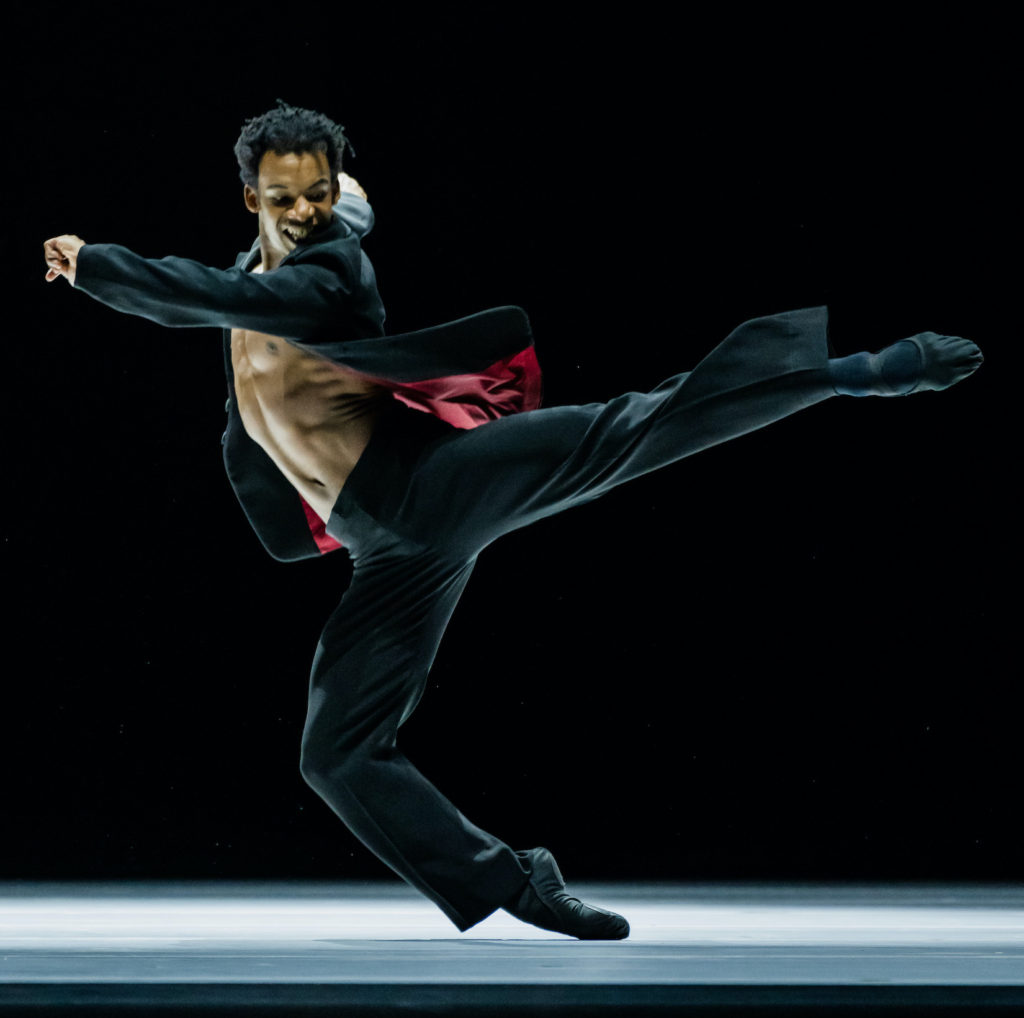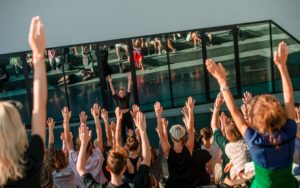Munich: Classical and contemporary riches - Vancouver Ballet Society
- Home
- City Reports 2020 - 2023
- Munich: Classical and contemporary riches

By Jeannette Andersen
The spring season in Munich culminated mid-May with the biennial festival Dance 2023. More that 60 performances featuring German and international choreographers in over 25 productions, of which five were premieres, were presented over 11 days. In 2021, the festival was entirely digital due to COVID-19, but this year it spread all over the city, in theatres, museums, cinemas, clubs, and public spaces. Curator Nina Hümpel focused on dance and digitality, prominent dance artists, Munich’s dance history, and artists from Eastern Europe (Lithuania, Poland, Czech Republic), Taiwan, and, from Canada, Montreal.
Opening night’s highlight was French-Canadian Catherine Gaudet’s The Pretty Things. For an hour, five dancers repeated simple movements until exhaustion, which was surprisingly meditative to watch.

Two days later, in her solo Hands Up, Lithuanian Agnietė Lisičkinaitė had us walking with her from a downtown square to the theatre, with some audience members asked to carry a provocative protest sign (for example, “If I wanted government in my womb — I’d fuck a governor”). In the theatre, she danced in front of a screen showing a recording of our walk, including the police car escort. At the end, when she covered her breasts in white paint, it showed that this outspoken woman was also vulnerable.
The evening concluded with the European premiere of M, by another French-Canadian choreographer, Marie Chouinard. Sometimes in slow motion, sometimes with speed, the dancers in M moved to a mix of the sound of rain, rhythmical breathing, music, and apparent gibberish. It felt like watching some secret ritual that worshipped nature while also being part of the modern technological world, suggested by the fluorescent pants worn by the dancers.

The Dance 2023 festival paid tribute to William Forsythe with a performance/lecture by Toni Rizzi, a former dancer with the Dresden and Frankfurt-based Forsythe Company, and a photo exhibit covering Forsythe’s work from the 1980s. Also, Germany’s Raimund Hoghe was honoured with a performance by his former dancers. From 1980-1990, Hoghe was Pina Bausch’s dramaturge. After that, he had a very successful career as a choreographer and dancer, despite being born with a spinal condition, one of the first differently abled artists to forge a career in dance. During the 2021 festival, Hoghe, then 72, died on the day he should have participated in an evening about his work, which went on without him.

Already during the early 20th century, Munich was a centre for modern dance. Americans Isadora Duncan, Loïe Fuller and Ruth St. Denis, and, of course, Germany’s Mary Wigman performed here, to mention just a few, and Rudolf von Laban established his school of modern dance in Munich. The festival offered three different walking tours to the places where these artists performed, each ending with a talk or a performance.

Munich’s Bayerisches Staatsballett, under Laurent Hilaire’s directorship, is slowly working itself into the league of the very best classical companies. At the beginning of April, they presented their annual Ballet Week, which opened with a company premiere of Sol León and Paul Lightfoot’s co-created Schmetterling (2010) and Silent Screen (2005), which perfectly complemented each other, both dealing with relationships and death. The choreographers had sought out corps dancers to perform some of the main parts, with the company’s overall quality of dancing so high you could not tell the difference between them and the principals.

During a busy and rewarding week, Bayerisches Staatsballett also performed John Neumeier’s A Midsummer Night’s Dream, John Cranko’s Romeo and Juliet, Christopher Wheeldon’s Cinderella, Alexei Ratmansky’s Tchaikovsky Overtures, and a triple bill by David Dawson, Ratmansky, and Marco Goecke.
Roberta Pisu is a dancer and choreographer with the ballet at the Gärtnerplatztheater. Pisu has started a collaboration with the Arcis Saxophone Quartet in order to give young choreographers a platform for their work. In March, she and Italian choreographer Matteo Cavone presented an evening with their own new pieces, collectively titled 2 x Getanzt (Danced Twice). Both created following these rules: the works would be created in five days to the same music, which would only be delivered five days before the start of rehearsals. Also, the musicians had to be part of the staging, and props and costumes would be found by the choreographers themselves.
2 x Getanzt turned into a very interesting evening that helped me hear the music by contemporary composers Leonhard Kuhn and Emma O’Halloran in two completely different ways. Pisu’s contribution, danced by two women dressed like twins, ends sadly with their separation. During Cavone’s piece, also for two women, I kept waiting for the sad section of the music that had ended Pisu’s piece so dramatically, but somehow in Cavone’s happier duet, which brought associations to seaside life, I never heard it.

Cavone is just one of around 40 foreign choreographers living and working part or full time in Munich. Another is Italian-born Diego Tortelli, who divides his time between Munich and Milan. In an interview conducted in English, he told me he appreciated working here “because it offers more possibilities and support for creating new work. Often dancers come from other places for specific performances, and this artistic exchange is very rewarding. The only problem with that many choreographers,” he added with a smile, “is that we are all applying for the same grants.”
That Munich has turned into an attractive city for contemporary dance is to a great extent due to the initiative of three women: Tina Mess, Simone Schulte-Aladag, and Miria Wurm. In 2014, they founded Tanzbüro, which Mess described in an interview as “an agency to empower and foster the free [i.e. independent] dance scene.” This includes offering networking opportunities and lobbying for the sector, as well as running a studio and helping with marketing artist events. Tanzbüro has also initiated an exchange with The Work Room in Glasgow, both venues offering opportunities for artists to work in their studios without the pressure of having to create a performance.
Tanzbüro recently produced a film series called Seven Thoughts About Dance, available to view online, in which seven choreographers living and working here are presented. It is a great introduction to the variety of modern dance thriving in Munich.

